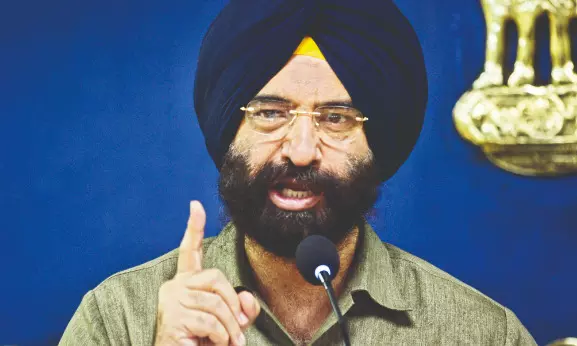Capital’s first cloud seeding pilot set for early September

New Delhi: Delhi is set to witness its first-ever cloud seeding operation in the first half of September, as part of a pilot initiative aimed at inducing artificial rainfall to curb rising air pollution levels. The announcement was made on Friday by Environment Minister Manjinder Singh Sirsa, who confirmed that the much-anticipated trials will take place after the monsoon begins its retreat.
Initially scheduled for early July, the trial was postponed after expert assessments from the India Meteorological Department (IMD), IIT-Kanpur, and the Indian Institute of Tropical Meteorology (IITM), Pune, indicated that prevailing weather conditions were not favourable. September was identified as a more suitable window, given its conducive cloud patterns that are ideal for artificial rain.
The Delhi government has allocated Rs.3.21 crore to fund this initiative, which is being led by the Department of Aerospace Engineering at IIT-Kanpur. The Directorate General of Civil Aviation (DGCA) has granted all necessary operational clearances. The aircraft, a Cessna 206-H (VT-IIT), has been fully equipped with cloud seeding instrumentation and will be operated by a licensed and certified crew.
“We are technically and logistically ready,” said Minister Sirsa. “IIT-Kanpur has completed all instrumentation work on the aircraft. All permissions have been secured. The trials will take place in the first and second week of September.”
The operation will consist of five aerial sorties targeting pollution-prone areas in north Delhi, such as Rohini, Bawana, Burari, and Alipur. The aircraft will also fly over nearby regions in Uttar Pradesh, including Loni and Baghpat, which share air quality concerns with Delhi.
During the trials, the aircraft will disperse hygroscopic substances, like sodium chloride and other aerosols, beneath the cloud base. These particles are designed to attract moisture and stimulate cloud formation and precipitation, a technique known as weather modification or cloud seeding.
Officials hope that artificial rainfall triggered by this method will help settle airborne pollutants and improve air quality in the targeted areas. Delhi routinely faces severe pollution, particularly in the post-monsoon and winter months, when air quality reaches hazardous levels.
“If this pilot proves effective, it could become a vital tool in our strategy to combat seasonal air pollution,” Sirsa said. “This is a step toward combining science and policy for cleaner air and healthier living conditions.”



